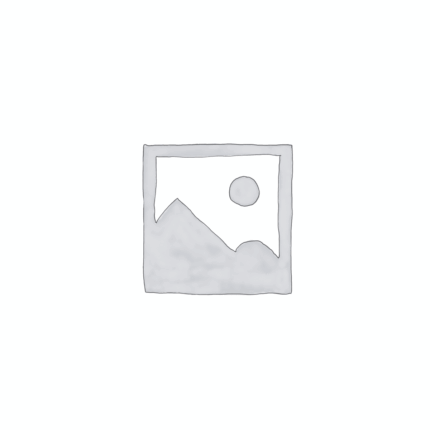Aluminium Hydroxide Extra Pure
Aluminium Hydroxide Extra Pure is a high-purity, white, odorless, and amorphous powder widely used in laboratory research and analytical applications. As an amphoteric compound, it reacts with both acids and bases, making it ideal for studying neutralization reactions, buffer systems, and solubility equilibria. In inorganic and coordination chemistry, it serves as a precursor for various aluminum compounds and plays a role in ion exchange and adsorption studies. Its extra pure grade ensures low interference in sensitive analytical procedures such as gravimetric analysis. Due to its tendency to absorb carbon dioxide from the air, it should be stored in tightly sealed containers under dry conditions to maintain its chemical integrity and performance in laboratory environments.
USES
Primary Uses
- Reagent in Qualitative Inorganic Analysis
- Used for precipitating metal ions and testing for amphoteric behavior in classic cation group analysis.
- Amphoteric Substance Demonstrations
- Ideal for teaching how substances can react with both acids and bases; dissolves in both HCl and NaOH.
- Precursor for Alumina in Lab Synthesis
- Converted to aluminum oxide (Al₂O₃) by controlled heating for use in ceramic, catalyst, or adsorption research.
- pH Buffering and Neutralization Reactions
- Applied in experiments to neutralize acids in controlled titration or environmental simulations.
- Model Substance in Environmental Chemistry
- Simulates behavior of aluminum compounds in acid rain, soil, or wastewater treatment studies.
Secondary Uses
- Adsorbent in Lab-Scale Purification
- Studied for its capacity to adsorb dyes, metal ions, and contaminants in prototype water purification systems.
- Pharmaceutical Research (Antacid Formulations)
- Used in lab tests modeling the behavior of aluminum hydroxide in gastrointestinal pH conditions.
- Thermal Decomposition Experiments
- Decomposes to Al₂O₃ and H₂O when heated, useful for thermogravimetric analysis (TGA) and calcination studies.
- Nanomaterial Synthesis Research
- Used as a base material for preparing aluminum-based nanostructures or gel-like materials.
- Teaching Lab Experiments in Solubility and Precipitation
Demonstrates low solubility and common ion effect principles in educational settings.
| AVAILABLE GRADES |
LABORATORY GRADE, |
|---|---|
| PACK SIZE AVERAGE |
Plastic Tin ( 20g- 500g) |
| AVAILABLE TEXTURES |
Powdery – Fine, dry particles (e.g., baking soda, powdered detergents). |
1. Basic Identification Attributes
- Chemical Name: Aluminium Hydroxide (IUPAC: Aluminium trihydroxide)
- CAS Number: 21645-51-2
- HS Code: 28183000
- Molecular Formula: Al(OH)₃
- Synonyms:
- Aluminum hydroxide
- Hydrated alumina
- Alumina trihydrate (ATH)
- Trihydroxidoaluminium
- C.I. Pigment White 24
2. Physical & Chemical Properties
- Physical State: Solid (fine powder)
- Color & Odor: White, odorless powder
- Boiling Point: Not applicable (decomposes)
- Melting Point: ~300°C (decomposes to Al₂O₃ and water vapor)
- Density/Specific Gravity: ~2.42 g/cm³
- Solubility:
- Water: Practically insoluble
- Acids & Alkalis: Soluble (amphoteric behavior)
- pH Level: ~6.5–8.0 (in suspension)
- Vapor Pressure & Volatility: Non-volatile
- Flash Point: Not flammable
- Autoignition Temperature: Not applicable
- Viscosity: Not applicable (solid)
3. Safety & Hazard Attributes
- Hazard Class (GHS):
- Not classified as hazardous
- May cause mild mechanical irritation to eyes, skin, or respiratory tract as dust
- NFPA Ratings:
- Health: 1
- Flammability: 0
- Reactivity: 0
- Exposure Limits:
- OSHA PEL (total dust): 15 mg/m³
- ACGIH TLV (inhalable): 1 mg/m³ (as aluminium salts)
- Reactivity:
- Amphoteric – reacts with both acids (forming Al³⁺ salts) and bases (forming aluminates)
- Stable under normal lab conditions
4. Storage & Handling Attributes
- Storage Conditions:
- Store in a dry, cool environment in sealed containers
- Protect from strong acids or bases unless part of intended experiment
- Incompatible Materials:
- Strong acids, strong bases
- Container Type:
- HDPE jars, plastic-lined fiber containers, or glass bottles
- Shelf Life & Expiration Date:
- 3–5 years if kept sealed and moisture-free
- Special Handling Requirements:
- Use dust mask or respirator if handling large quantities
- Gloves and goggles recommended to avoid eye or skin contact
5. Regulatory & Compliance Attributes
- Regulatory Status:
- Listed in TSCA, REACH, and major global inventories
- Common in labs for analytical, neutralization, and ceramic applications
- Hazard Symbols (GHS Pictograms):
- None required
- Transportation Restrictions:
- Not classified as hazardous for transport
- Waste Disposal Method:
- Dispose as non-hazardous inorganic waste
- Follow lab and institutional protocols for waste handling
6. Environmental & Health Impact
- Ecotoxicity:
- Low; considered environmentally benign in small quantities
- Persistence in Environment:
- Stable; does not degrade biologically but binds in soil
- Carcinogenicity/Mutagenicity:
- Not classified as carcinogenic or mutagenic by IARC, NTP, or OSHA
- Biodegradability:
- Not biodegradable (inorganic), but chemically stable and safe in soil or water
- Personal Protective Equipment (PPE):
- Wear lab coats, chemical-resistant gloves (e.g., nitrile), and safety goggles.
- Use a dust mask or work under a fume hood if handling powders in open air.
- Handling:
- Avoid creating or inhaling dust.
- Do not get in eyes or on skin.
- Handle in a well-ventilated laboratory environment.
- Avoid contact with acids (reacts to release heat and aluminum salts).
- Storage:
- Store in a tightly closed container in a dry, cool, and well-ventilated place.
- Keep away from strong acids and incompatible materials.
- Label properly and protect from moisture and contamination.
- Hygiene Measures:
- Wash hands and exposed skin thoroughly after handling.
- Do not eat, drink, or smoke in the laboratory.
- Decontaminate lab surfaces after use.
FIRST AID MEASURES
- Inhalation:
- Move the person to fresh air immediately.
- If symptoms such as coughing or throat irritation occur, seek medical advice.
- Rinse mouth and nasal passages with water.
- Skin Contact:
- Wash with soap and water.
- Remove contaminated clothing.
- Seek medical attention if irritation develops or persists.
- Eye Contact:
- Immediately flush eyes with water for at least 15 minutes.
- Hold eyelids open during rinsing.
- Seek medical attention if irritation or discomfort persists.
- Ingestion:
- Rinse mouth with water.
- Do not induce vomiting.
- Give water only if the person is fully conscious.
- Seek medical attention if large amounts are swallowed or symptoms appear.
FIRE FIGHTING MEASURES
- Suitable Extinguishing Media:
- Use dry chemicals, water spray, foam, or carbon dioxide (CO₂) depending on the surrounding fire.
- Specific Hazards:
- Not flammable, but may release irritating fumes (aluminum oxides) if exposed to high heat.
- In contact with acids, may produce heat and mildly corrosive byproducts.
- Protective Equipment for Firefighters:
- Use full protective clothing and self-contained breathing apparatus (SCBA).
- Firefighting Instructions:
- Cool containers exposed to fire with water spray.
- Avoid inhalation of decomposition fumes.
- Fight fire from an upwind position if possible.


 Pesticides (Herbicides, Insecticides, Fungicides)
Pesticides (Herbicides, Insecticides, Fungicides) Animal Feed Additives
Animal Feed Additives Biostimulants
Biostimulants Plant Growth Regulators
Plant Growth Regulators Fertilizers
Fertilizers Soil Conditioners
Soil Conditioners
 Decoratives
Decoratives Dough Conditioners
Dough Conditioners Fat Replacers
Fat Replacers Flour Treatments
Flour Treatments Leavening Agents
Leavening Agents Preservatives(baking)
Preservatives(baking)
 Bleaching Agents
Bleaching Agents Builders
Builders Enzymes
Enzymes Fragrances
Fragrances Surfactants(cleaning)
Surfactants(cleaning) Solvents (cleaning)
Solvents (cleaning)
 Admixtures
Admixtures Anti-Corrosion Coatings
Anti-Corrosion Coatings Concrete Repair Chemicals
Concrete Repair Chemicals Curing Compounds
Curing Compounds Sealants and Adhesives
Sealants and Adhesives Waterproofing Agents
Waterproofing Agents
 Antioxidants(cosmetic)
Antioxidants(cosmetic) Emollients
Emollients Fragrances and Essential Oils
Fragrances and Essential Oils Humectants
Humectants Surfactants(cosmetic)
Surfactants(cosmetic) Thickeners
Thickeners UV Filters
UV Filters Preservatives (cosmetic)
Preservatives (cosmetic)
 Bio-based Solvents
Bio-based Solvents Biodegradable Surfactants
Biodegradable Surfactants Carbon Capture Chemicals
Carbon Capture Chemicals Renewable Polymers
Renewable Polymers Wastewater Treatment Chemicals
Wastewater Treatment Chemicals
 Acidulants
Acidulants Antioxidants
Antioxidants Colorants(food)
Colorants(food) Emulsifiers
Emulsifiers Flavor Enhancers
Flavor Enhancers Nutraceutical Ingredients (food)
Nutraceutical Ingredients (food) Nutrient Supplements
Nutrient Supplements Preservatives(food)
Preservatives(food) Sweeteners
Sweeteners
 Dried Herbs
Dried Herbs Fresh Herbs
Fresh Herbs Ground Spices
Ground Spices Spice Blends
Spice Blends Whole Spices
Whole Spices
 Analytical Reagents
Analytical Reagents Biochemical Reagents
Biochemical Reagents Chromatography Chemicals
Chromatography Chemicals Inorganic and Organic Standards
Inorganic and Organic Standards Laboratory Safety Chemicals
Laboratory Safety Chemicals Microbiology and Cell Culture Reagents
Microbiology and Cell Culture Reagents Molecular Biology Reagents
Molecular Biology Reagents Solvents(lab)
Solvents(lab) Specialty Laboratory Chemicals
Specialty Laboratory Chemicals Spectroscopy Reagents
Spectroscopy Reagents
 Collectors
Collectors Dust Suppressants
Dust Suppressants Explosives and Blasting Agents
Explosives and Blasting Agents Flocculants and Coagulants
Flocculants and Coagulants Frothers
Frothers Leaching Agents
Leaching Agents PH Modifiers
PH Modifiers Precious Metal Extraction Agents
Precious Metal Extraction Agents
 Catalysts
Catalysts Corrosion Inhibitors
Corrosion Inhibitors Demulsifiers
Demulsifiers Drilling Fluids
Drilling Fluids Hydraulic Fracturing Fluids
Hydraulic Fracturing Fluids Scale Inhibitors(oil)
Scale Inhibitors(oil) Surfactants(oil)
Surfactants(oil)
 Active Pharmaceutical Ingredients (APIs)
Active Pharmaceutical Ingredients (APIs) Analgesics and Antipyretics
Analgesics and Antipyretics Antibiotics
Antibiotics Antiseptics and Disinfectants
Antiseptics and Disinfectants Excipients
Excipients Nutraceutical Ingredients (Pharmaceutical)
Nutraceutical Ingredients (Pharmaceutical) Solvents(pharmaceutical)
Solvents(pharmaceutical) Vaccine Adjuvants
Vaccine Adjuvants
 Antioxidants(plastic)
Antioxidants(plastic) Colorants (Pigments, Dyes)
Colorants (Pigments, Dyes) Fillers and Reinforcements
Fillers and Reinforcements Flame Retardants
Flame Retardants Monomers
Monomers Plasticizers
Plasticizers Polymerization Initiators
Polymerization Initiators Stabilizers (UV, Heat)
Stabilizers (UV, Heat)
 Accelerators and Retarders
Accelerators and Retarders Adhesion Promoters
Adhesion Promoters Antidegradants (Antioxidants, Antiozonants)
Antidegradants (Antioxidants, Antiozonants) Blowing Agents (for foam rubber)
Blowing Agents (for foam rubber) Plasticizers and Softeners
Plasticizers and Softeners Reinforcing Agents (Carbon Black, Silica)
Reinforcing Agents (Carbon Black, Silica) Vulcanizing Agents (e.g., Sulfur, Peroxides)
Vulcanizing Agents (e.g., Sulfur, Peroxides)
 Analytical Reagents
Analytical Reagents Automotive chemicals
Automotive chemicals Electronic Chemicals
Electronic Chemicals Lubricants
Lubricants Photographic Chemicals
Photographic Chemicals Pyrotechnic Chemicals
Pyrotechnic Chemicals Refrigerants
Refrigerants Sealants and Adhesives
Sealants and Adhesives
 Antistatic Agents
Antistatic Agents Bleaching Agents
Bleaching Agents Dyes and Pigments
Dyes and Pigments Finishing Agents
Finishing Agents Flame Retardants
Flame Retardants Softening Agents
Softening Agents
 Antifoaming Agents
Antifoaming Agents Chelating Agents
Chelating Agents Coagulants and Flocculants
Coagulants and Flocculants Corrosion Inhibitors
Corrosion Inhibitors Disinfectants and Biocides
Disinfectants and Biocides Oxidizing Agents
Oxidizing Agents pH Adjusters (water)
pH Adjusters (water) Scale Inhibitors( water)
Scale Inhibitors( water)















